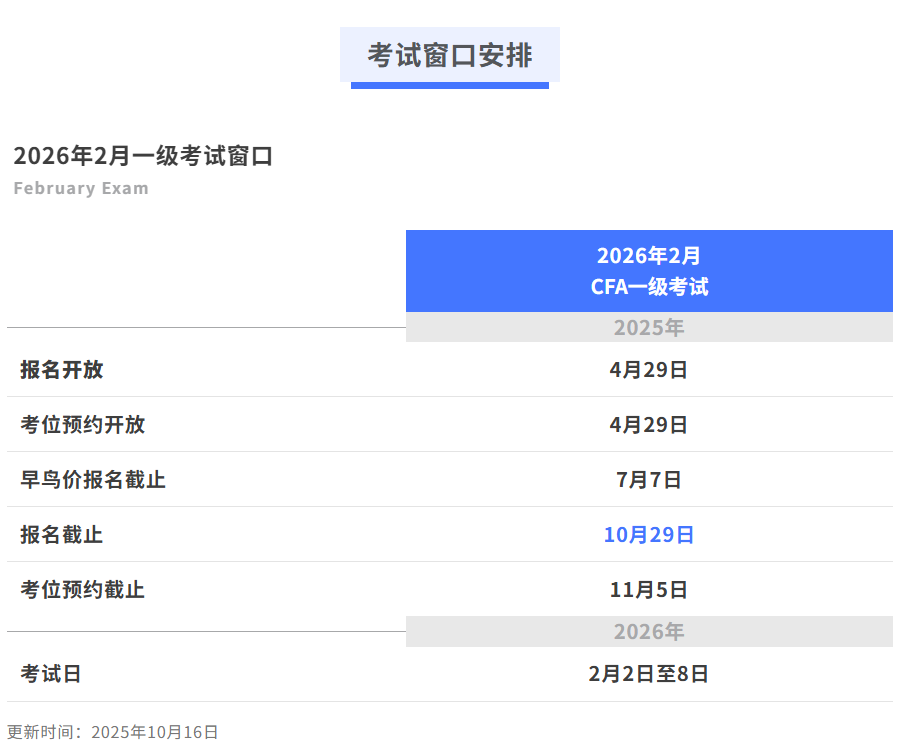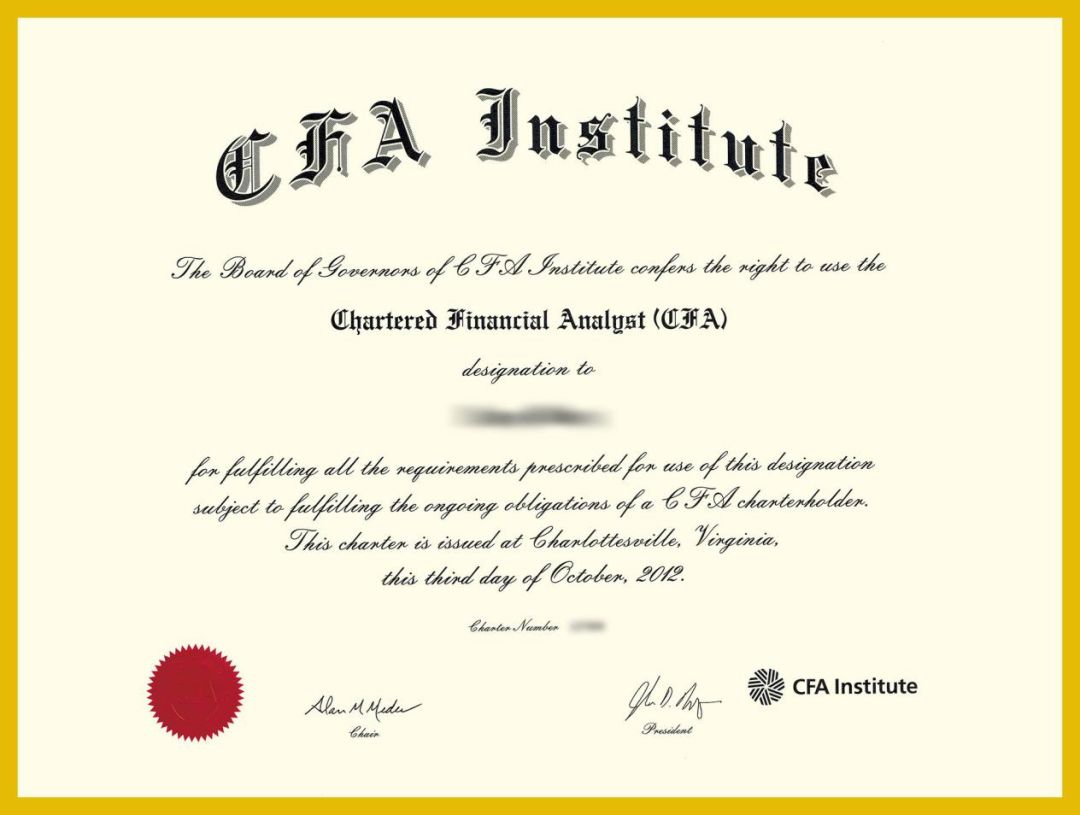By Peter Lazaroff, CFA, CFP
Categories: Drivers of Value, Equity Investments, Portfolio Management
You know your client’s portfolio is properly diversified when there is always a portion of it you hate. Right now, that hateful piece of the equity allocation is global stocks.
The performance has been particularly frustrating for investors who compare performance with a domestic benchmark, such as the S&P 500 Index. It’s tempting to criticize a strategy based on recent performance, but using global equities as part of a diversified portfolio still makes sense.

How Fast We Forget
It wasn’t that long ago that everyone seemed to hate US stocks and wanted to increase their allocation of global equities (particularly emerging markets). Investors who chased performance and made significant shifts in their allocations following the global equity outperformance have recently been burned.
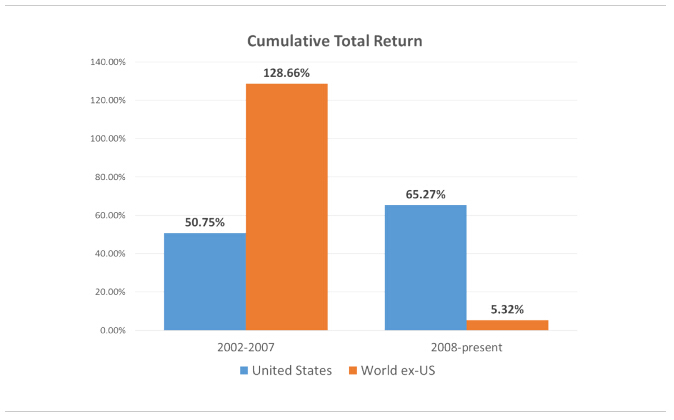
Diversification doesn’t work when you deviate from the client’s long-term investment plan. That makes it all the more important to recognize that periods of over- and underperformance are the norm when investing in a globally diversified portfolio.
Different Decade, Different Winners
The dataset for the MSCI World ex-US Index goes back to 1970. If you break out annualized returns by decade, you can see that periods of outperformance and underperformance for global equities have always been part of the deal.
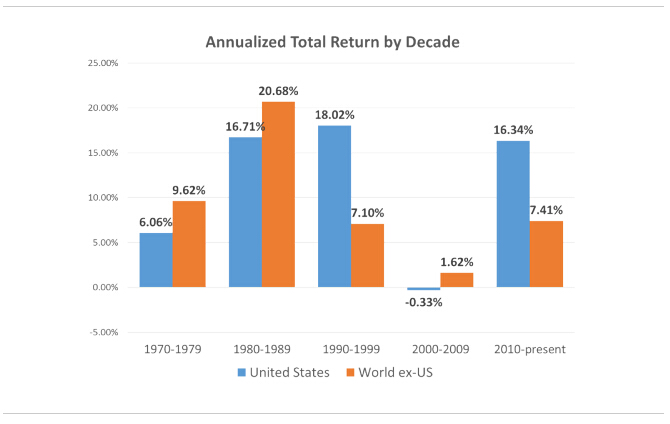
Equally important from a diversification standpoint is that these two asset classes experience different levels of volatility, which you can see in the following chart, which breaks out annualized standard deviation by decade.
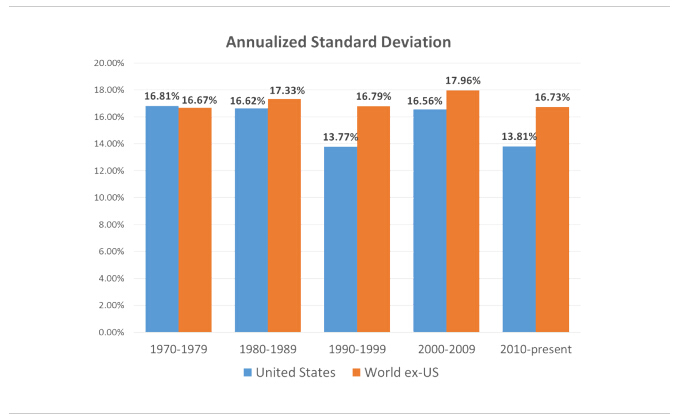
Because the point of diversification is to combine assets with different levels of return and volatility, we would argue that global equity exposure has been working for long-term investors.
Measuring Historical Success
Building an investment portfolio to meet your client’s long-term goals is all about trying to earn the highest return for a given level of risk. That requires combining investments that zig with others that zag in order to achieve the desired levels of risk and return in your client’s portfolio.
One way to measure the risk–return trade-off is with the Sharpe ratio. The following table compares US and global stocks as well as a diversified portfolio of 75% US stocks and 25% global stocks.

The first thing to notice is that the diversified portfolio has the lowest standard deviation, which means that it is less volatile than investing in either US stocks or global stocks alone. Although the returns of the diversified portfolio are slightly less than those of investing in US stocks, the lower volatility results in a better (higher) Sharpe ratio.
The diversified portfolio’s higher Sharpe ratio means that it earns a higher risk-adjusted return; so, if the goal is to earn the highest level of return at a given level of risk, investors should prefer the diversified portfolio.
Details in Data
There are a few shortcomings to the Sharpe ratio analysis shown previously. First, the diversified portfolio increases the Sharpe ratio by only 5%. That’s hardly an awe-inspiring improvement. Furthermore, we can’t expect future returns and volatility to perfectly mimic the past. There is always a small margin of error.
Second, the sample used in the previous analysis pits global equities against an extremely impressive period of US equity returns. Reliable data on US stock returns go back to 1926, but we are capturing only the past 44 years because the global equity data doesn’t begin until 1970 (and the inclusion of emerging market data within this index doesn’t begin until 1990). Within these past 44 years are six of the seven longest bull markets in US history (see the following table).
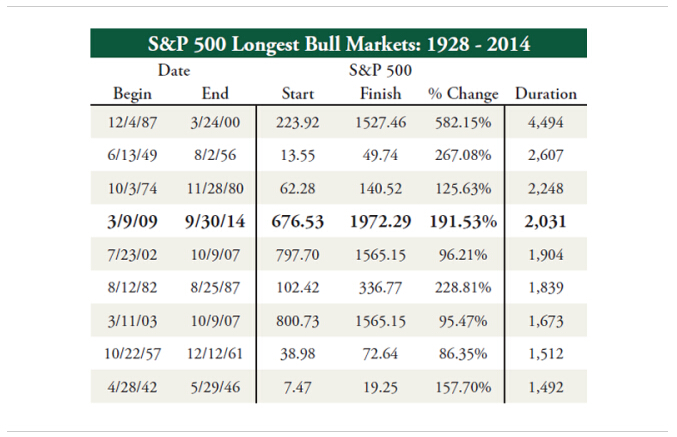
If we compare the sample period with the entire dataset for US markets, we find that the average return is lower and average volatility is higher than in the 1970–present dataset.

We couldn’t speculate on how the historical performance comparison may have differed if we hadn’t picked up such a positive period for US stocks. We can, however, measure the diversification benefit of global equities by looking at periods in which US stocks had a negative monthly return.
Since 1970, there were 207 months in which US stocks were down. Although global stocks tended to fall too, they only had a correlation of 0.62 and provided higher average returns than the US stocks. Again, this is what diversification is all about: combining assets that don’t move in lockstep in order to have a less volatile portfolio.
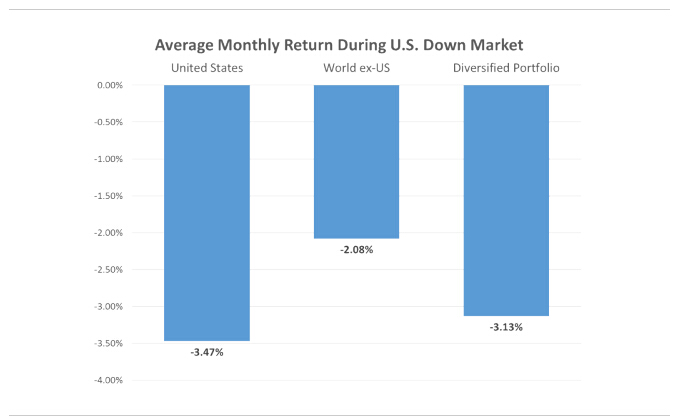
Conclusion
Although recent performance may suggest otherwise, investing in global equities as part of a diversified portfolio has historically provided some modest benefit to long-term investors via a small improvement in risk-adjusted returns and superior performance during down markets in the United States.
Investors considering reducing their allocation to global equities because of recent underperformance may want to consider the perils of chasing performance. It is extremely improbable that someone could accurately predict the best-performing asset class year in and year out.
If the diversification argument for global equities isn’t strong enough for you, then perhaps you ought to consider the tendency of global stocks to outperform in the five years following an annual loss.
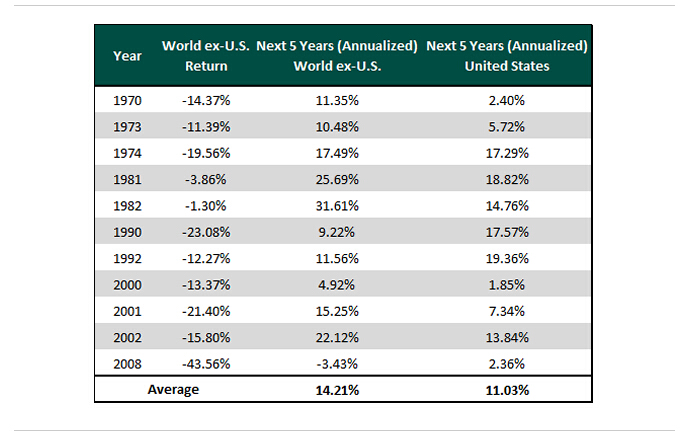
Global equities currently have a negative annual return, which history says could be a precursor to outperformance in the next five years. Although this doesn’t always hold true, global stocks have prevailed in eight of the last 11 such instances.
There are many uncertainties facing global equity investors at the present moment, but it is those uncertainties that provide for higher expected returns. As Warren Buffett famously said, “Be fearful when others are greedy, and be greedy when others are fearful.”
Over time, global investing has improved diversification for disciplined investors, and we believe allocations should be maintained despite recent underperformance and the troubling outlook.
If you liked this post, don’t forget to subscribe to the Enterprising Investor.
All posts are the opinion of the author. As such, they should not be construed as investment advice, nor do the opinions expressed necessarily reflect the views of CFA Institute or the author’s employer.



 金融证书
金融证书
 发布时间:2013-12-23
发布时间:2013-12-23


 复制本文链接
复制本文链接 模拟题库
模拟题库

 1540
1540

